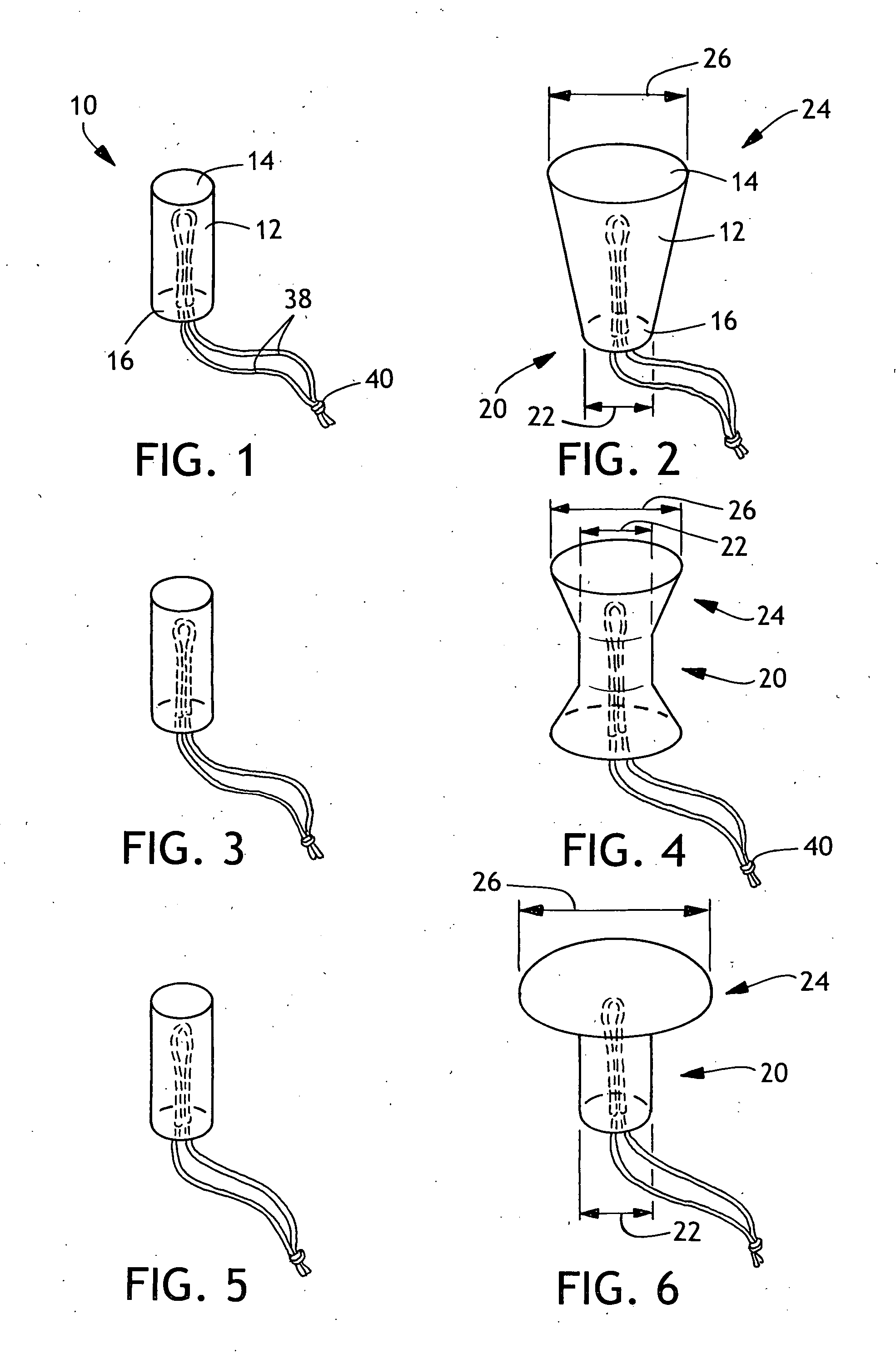Dual mode absorbent tampon
a technology of absorbent tampons and tampons, which is applied in the field of catamenial tampons, can solve the problems of many tampons, inability to prevent premature and tampons that do not properly fit above the introital region of the vagina, so as to prevent leakage of body fluid and good utilization of the absorbent. the effect of the entire absorben
- Summary
- Abstract
- Description
- Claims
- Application Information
AI Technical Summary
Benefits of technology
Problems solved by technology
Method used
Image
Examples
example
[0042] The following material, for example, is suitable to provide features for tampons of the invention. An airlaid material was produced on a Danwebe Airlaid line containing 93% trilobal rayon fiber (3.3 dtex, 5 mm length) and 7% binder fiber (PET / PE, 3.0 dtex, 6 mm length), with a density of 0.04 g / cc and a basis weight of 180 gsm. This material was cut into rolls of 50 mm width and converted as tampon ribbon on a conventional Ruggli® tampon machine type CL.2 / CL 3 into radially wound tampons with a withdrawal string. The tampon was treated with ultrasonic waves using a Branson 8500® machine and a circular sonotrode, at a pressure of 300 kPa and a dwell time of 0.3 sec, in the center section of the tampon (e.g., to impart a pre-determined pattern like FIGS. 3 and 4).
Test Methods
[0043] The testing set forth herein is performed where the tampons to be tested are conditioned 24 hours and tested under TAPPI standard conditions of 23±1° C. and 50±2% RH. The test equipment discussed i...
PUM
 Login to View More
Login to View More Abstract
Description
Claims
Application Information
 Login to View More
Login to View More - R&D
- Intellectual Property
- Life Sciences
- Materials
- Tech Scout
- Unparalleled Data Quality
- Higher Quality Content
- 60% Fewer Hallucinations
Browse by: Latest US Patents, China's latest patents, Technical Efficacy Thesaurus, Application Domain, Technology Topic, Popular Technical Reports.
© 2025 PatSnap. All rights reserved.Legal|Privacy policy|Modern Slavery Act Transparency Statement|Sitemap|About US| Contact US: help@patsnap.com


